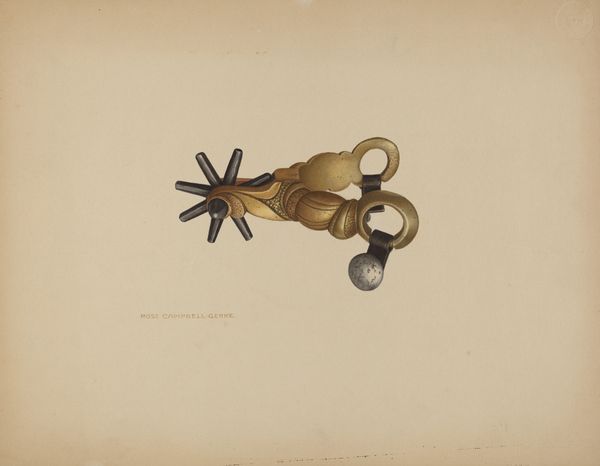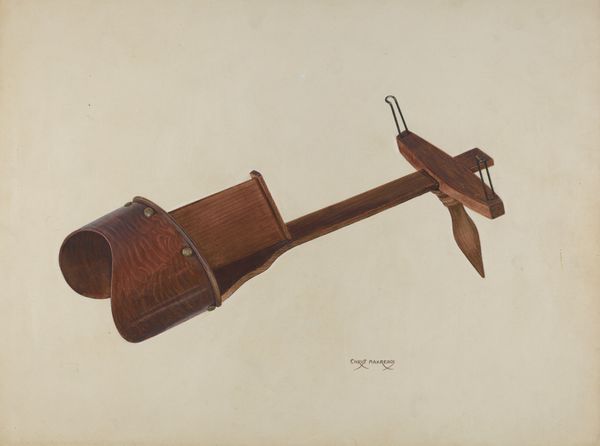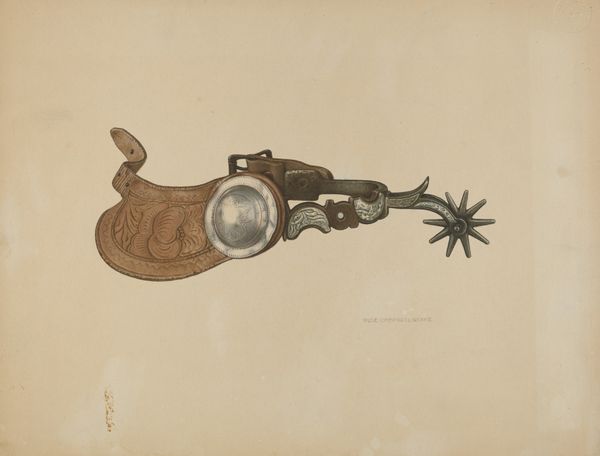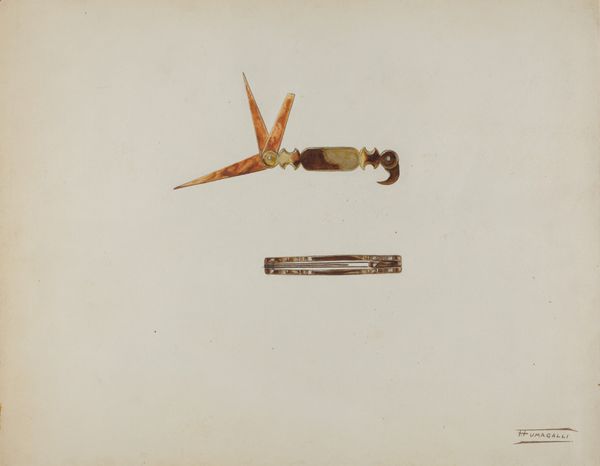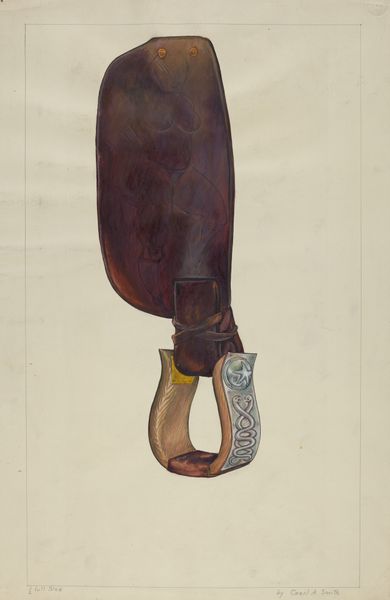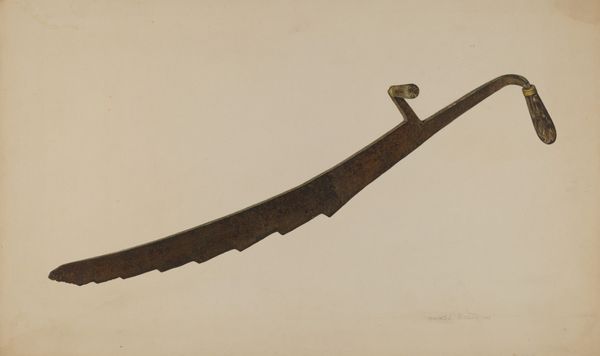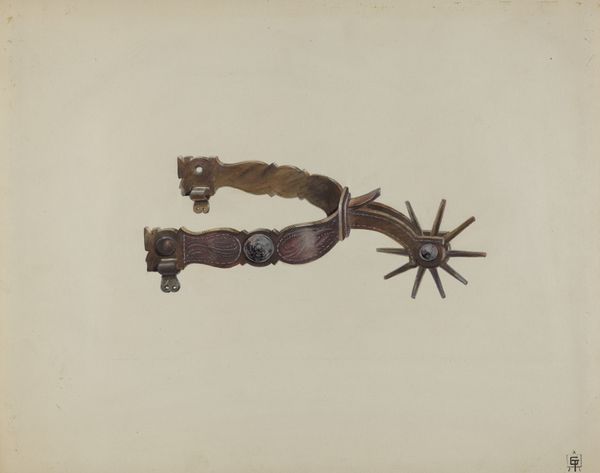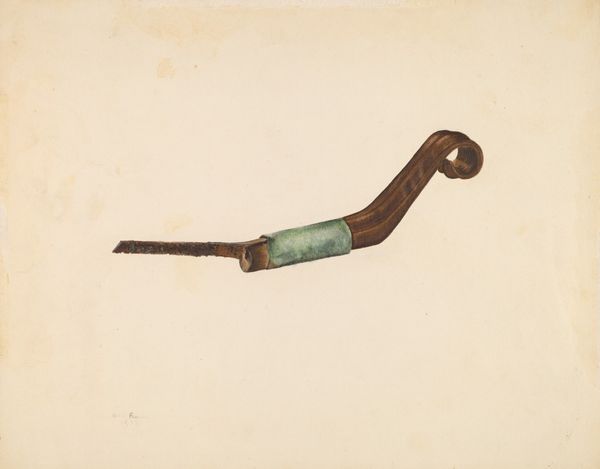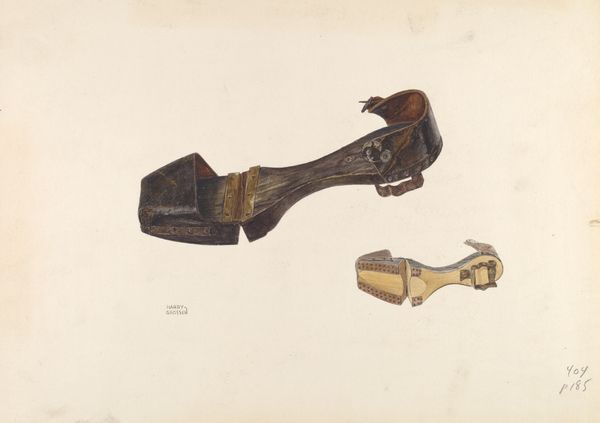
drawing, watercolor, pencil, graphite
#
drawing
#
charcoal drawing
#
watercolor
#
pencil
#
graphite
#
watercolour illustration
#
graphite
#
watercolor
Dimensions: overall: 36.9 x 44.8 cm (14 1/2 x 17 5/8 in.)
Copyright: National Gallery of Art: CC0 1.0
Curator: Welcome. We are looking at "Spring Lancet" created around 1940 by Joseph Cannella. It’s a graphite, pencil, and watercolor drawing on paper. Editor: Hmm, the precision of the drawing is kind of striking! It feels cold, almost clinical. You'd think with watercolor it would feel softer, but there's a metallic glint that overrides any natural feel. I wonder what it was used for... It looks medieval but maybe not. Curator: Yes, that clinical feeling is interesting given the socio-political context. Cannella created this during a period when industrial advancements were both celebrated and feared. Medical tools like this often symbolized progress but also anxieties surrounding dehumanization in the face of technology. Editor: Dehumanization makes sense. Even the colors, the bronzes and browns, give it that "old machine" feel—like something plucked from a forgotten corner of an inventor's workshop, ready to... dissect something. Or perhaps examine more like. What does the name "Spring Lancet" evoke for you? For me, there is something about "spring" as new, a period of hope and birth and the use of "lancet", is violent, like rebirth but causing pain? Curator: That's a compelling interpretation. It speaks to the dual nature of medical intervention, doesn’t it? Lancets are traditionally associated with bloodletting, a practice that evolved dramatically throughout the history of medicine, surrounded in its time with beliefs about how best to heal people. Combining this idea with "spring," Cannella is perhaps commenting on society's eagerness to embrace new methods, despite their potential invasiveness, and how technology will always push and force something new to blossom. Editor: Right. I feel that it is neither praising nor condemning the object. It's rendered in such exquisite detail that it suggests admiration or maybe even a love of machinery. I am more unsettled the more I look. There is a strange beauty in seeing the familiar rendered alien. Curator: That feeling is a testament to Cannella's technical skill, but also the power of the image. It invites contemplation on how innovation impacts how we understand and interact with our world. Thank you for your time and reflections on Cannella's "Spring Lancet." Editor: It has been a great way to look at this small thing as both ordinary and strange, brutal but maybe... useful. Thanks for joining me!
Comments
No comments
Be the first to comment and join the conversation on the ultimate creative platform.
